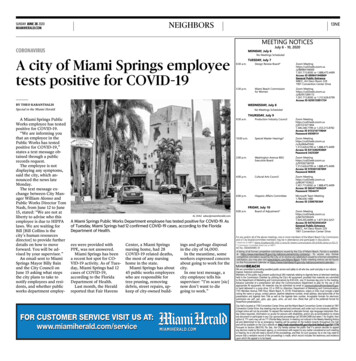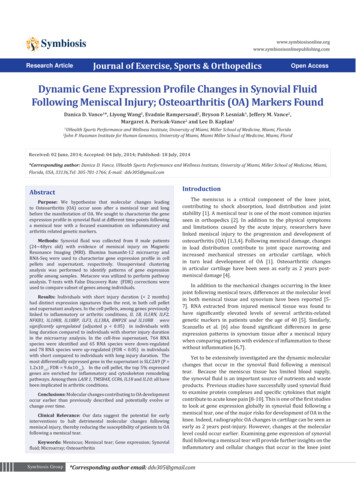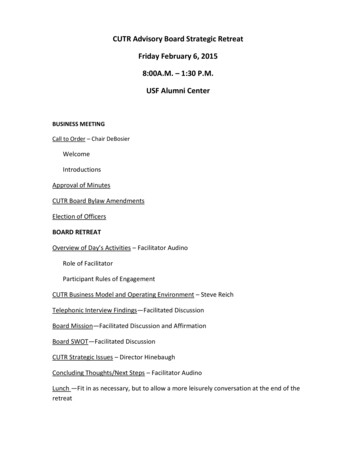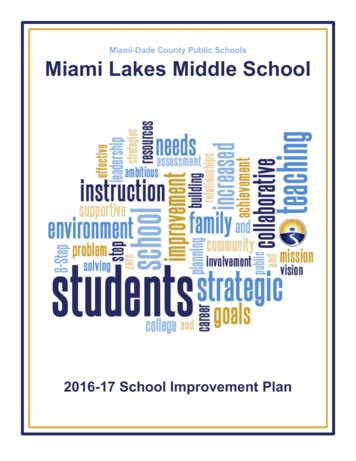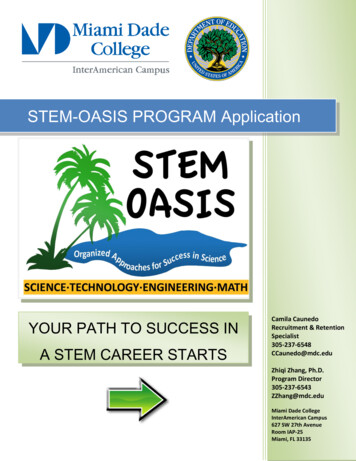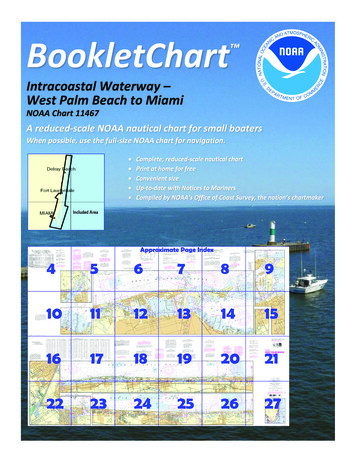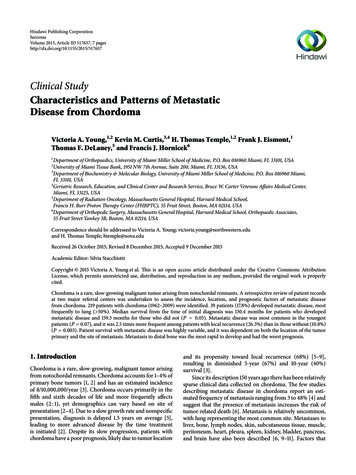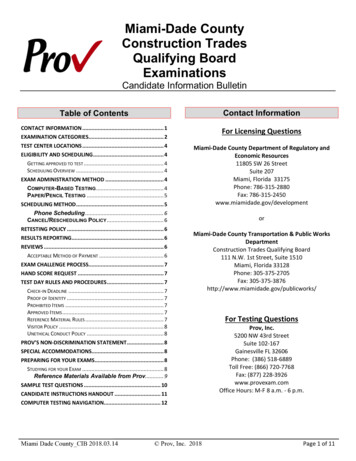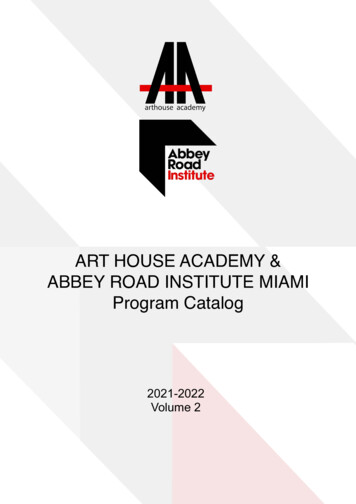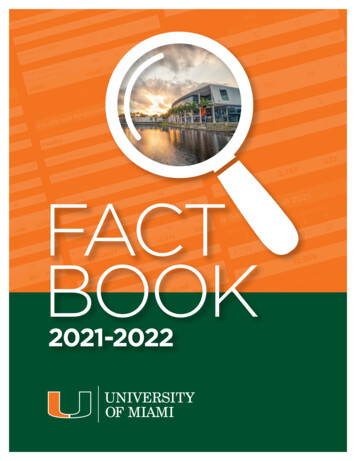
Transcription
922518082512417124232001houachin29Miaby te one creditationTotalc124i1oursnhotuitndd1eeasm2r2ace1 Total8s incrll 20Com rt-Time nd Hum203Totalhour33a efin1Class8 ngi16914516ic44Eies27d1ysuttul6120M 48Facu127lth Sa153FrosteerHutd4880itecs079Archng e150 s e n s t i 26umant9mmuu7So3H.4Cd1938Cont int00on an19488ucati 212ginee4 OTAL 84lnl6E56a,491 T8ciFs96uet l of M17ebio4r#4do73,1tau7h3ten 3,Y3,3er SchStetlllsaim66rel5M4Fi600%and Hnrol 600N7e4 00nd O4736002Rose5,83ary 3CUG9 e96938L FA0380 ,4732,0855,76OTA6,858T1,61el4854 u6re6ac1PP1a/17F.em2886,6 F 6,0 TOT-exemResel- andnts.y ,7 e a r0 U19,8232First-Y7,60532 1 w10,5fer8,04 N e0s68n03,T r a 9,3901e3,14 N e w 0dicine2Mw1fLa7,4ol7ool o51,57Schor Sch3,85althetMilleH0n5nd5,53llme ,885ing a91 EnroNurs s59ie62 2ineStud1,486,11 ecturel Mar3iets.t6ni7radRose44,6ies/GA r c h for zero S c i e n c e s097Stud Programs,.9st7nn1eCointands taksinesuol/JoBourse A r t scthSchorcesearerbeLool. Rmi Hg schr.TOTAicanmunHumComn andiotaEduc r3,277FACTBOOK99%82%13:1fuldee stuludetc.aniguvedinradn%rou1es aboher gt2lo9tob09a2edTll0 du., an Faaol r10 M.D., J.D %tsetocitarts82octoeris1 Includeith dractChaulty w3:1rl(houLTYStaffACU YEESFLTOTA EMPLOAND2021-2022ert-time.ith pa h part-timwlsacuaeidtf indiv yees whober oloe num culty emp-fanon9tycck fare-traunered/tTenu al degreeinytermacultime ftlatioluFulty rcafentStud21lFacu1ert-time.ith pa h part-timwlsacuaeidtivoof indes whmberployeumne0ey2thult0,ed byn-facber 3easur ing 79 noptememSisf1 As oultyclude facies, in2 Part-tim nal activitctioinstru
To Our Readers:The information presented in the Fall Fact Book represents the most currentbenchmark data available. Fact Books are posted on the IRSA’s website andare also available in the UM Archive’s Digital Collection and can be found inthe Richter Library’s website.INSTITUTIONAL RESEARCH AND STRATEGIC ANALYTICSP.O. Box 248285Coral Gables, FL 33124-2923(305) uRevised - May 2022
TABLE OF CONTENTSUniversity of Miami Mission Statement . iiAn Introduction to the University of Miami . iiOrganization Chart . xxvStudent Enrollments:Headcount by Class and School. 1Full-Time Equivalence, Full-Time, Part-Time, Credit Load . 10Entering Student Classifications (Undergraduate & Graduate/Professional) . 19Admissions Data . 22Headcount by MajorUndergraduate . 24Graduate/Professional . 33Undergraduate - Five-Year Trends . 41Graduate/Professional - Five-Year Trends . 52Headcount by Minor . 61Gender Distribution . 65Racial and Ethnic Distribution . 68Geographic Origins. 76Headcount by State or Country. 87Religious Preferences . 99Age Distribution . 101Residence of Students . 105Credit Hours:Credit Hours Taught by School - Five-Year Trends . 107Credit Hours for Each Home School of Majors by Teaching School . 112Credit Hours Taught by Department . 119Retention & Graduation Rates . 128Degrees Granted . 130Alumni . 141Class size for Undergraduate Courses . 142Faculty and Other Employees . 144Library Statistics . 155Tuition, Fees, Room and Board, Expenses . 156Research Funding . 157Financial Highlights & Endowment . 163
THE UNIVERSITY OF MIAMI MISSION STATEMENTThe University of Miami’s mission is to transform lives through education, research, innovation, and service.We are committed to freedom of inquiry-the freedom to think, to question, to criticize, and to dissent. Wewill pursue excellence in our research and educational missions with the single-mindedness that marks greatcommitments. We will prepare our students for rewarding lifelong careers and will instill in them a continued andpermanent dedication to the search for knowledge and the search for truth. We will provide them with thefoundations for ethical citizenship and service to others, a respect for differences among people, and a commitmentto high standards of thought and communication. We will provide service to our community and beyond, includingthe delivery of high-quality, compassionate care through an academic health system. We will strive to transform theworld in positive ways through innovative education, impactful research and scholarship, and the translation ofknowledge into solutions.Founded in 1925 by a group of Miami citizens who believed that an institution of higher learning wasnecessary for the development of their young and growing community, the University has matured into a majorresearch university and academic health system. Located within one of the most dynamic and multicultural cities inthe world, the University is a distinctive community with a variety of races, ethnicities, customs, genders, and faiths.Its geographic location uniquely positions the University to be both local and global in outlook and outreach.We aspire at the University of Miami: to be a global university with an intentionally hemispheric strategy,pursuing inclusive engagement as a bridge across the Americas to the rest of the world; to be an excellent university,striving to achieve the highest standards of performance in every aspect of our work; to be a relevant university,connecting scholarship to real-world solutions; and to be an exemplary university, offering a model to societythrough the steadfast achievement of our mission.AN INTRODUCTION TO THE UNIVERSITY OF MIAMIHistory:Although many people over a period of years played a role in the establishment of the University of Miami,it was William Jennings Bryan who first promoted the need and stimulated a community planning effort for auniversity to serve the growing Miami area. In 1925 the University received its charter and in the following yearenrolled its first students. On March 18, 1926, Bowman Foster Ashe was named executive secretary andsubsequently president of the University by the Board of Regents.The cornerstone of the Merrick Building, which was to house classrooms and administrative offices, waslaid on February 4, 1926, on land donated by George E. Merrick, founder of the city of Coral Gables. Merrick alsodonated 5 million to be matched by other sources. When Merrick’s donation could not be matched, the work thathad begun on the Merrick Building ceased and a decision was made to convert the partially constructed AnastasiaHotel into temporary quarters for the University. In the rush to finish the Anastasia Building before the announcedopening of the University in October, cardboard-covered partitions were used to separate rooms, leading to the name“Cardboard College.” Construction of the Merrick Building would not resume until 1949, 23 years after it started.In September, just before the first classes were to begin, the great hurricane of 1926 swept through SouthFlorida, causing destruction that left the University further in debt. In spite of tremendous adversity, the Universitymanaged to open its doors on October 15, 1926, offering programs in the liberal arts and music to 560 students. TheSchool of Law was added in 1928 and the Schools of Business and Education were created in 1929.The Florida depression that followed the collapse of the real estate market and the national depression thatstarted in 1929 added further financial burdens that brought the survival of the University into question. PresidentAshe had to resort to borrowing on his personal insurance policy to pay faculty salaries. Still in debt, the Universityfiled a petition for bankruptcy in 1932. Determined to keep the University going, President Ashe and others formedii
a new corporation, The University of Miami, Inc., and in 1934, at an auction, bought back the University’s propertyfor 15,758.84.The 1940s were a time of great change at the University. During World War II, President Ashe arranged tohave University facilities available for training U.S. Army and British Royal Air Force personnel. In addition, thewar gave the University reason to expand its facilities. The Graduate School was created in 1941 and the MarineLaboratory was formally established in 1943. In 1947, shortly after the war ended, the School of Engineering wasfounded, and the University began the excavation of Lake Osceola.Growth continued at the University in the 1950s. The School of Medicine, the first to be accredited in thestate of Florida, was founded in March of 1952. After President Ashe fell ill and subsequently died in December of1952, Jay F.W. Pearson was named the second president of the University in January of 1953. President Pearsonserved in that capacity until 1962. During his tenure, the first computer on the University campus was installed inthe Engineering Building and the Board of Trustees removed all racial barriers from admission policies.Henry King Stanford became the University’s third president on April 18, 1962. The Department ofNursing, which originated as a department in the College of Arts and Sciences, became the School of Nursing in1968. Also, in 1968, with a gift from The Rosenstiel Foundation, the University obtained a deed for 9.7 acres of landon Virginia Key. Shortly after these events, in 1969 the Institute of Marine Science (formerly the MarineLaboratory) became a school and several months later was renamed the Rosenstiel School of Marine andAtmospheric Science. Although continuing education classes had been offered since 1926, the University formallyfounded the School of Continuing Studies in 1974.Edward T. Foote II was inaugurated as the University’s fourth president in 1981. Under his leadership, theUniversity was selected to shelter a chapter of Phi Beta Kappa, the nation’s oldest and most prestigious honorsociety. Three additional schools were also founded in the 1980s: the School of Architecture (1983), the GraduateSchool of International Studies (1983), and the School of Communication (1985). In 1997, the Graduate School ofInternational Studies was reorganized to offer undergraduate degree programs and was renamed the School ofInternational Studies. President Foote also led a capital campaign that raised more than 500 million, at the time thethird largest campaign in American higher education.Donna E. Shalala became the University’s fifth president in 2001 and served 14 years until stepping downon June 1, 2015. At the time of her inauguration, the University celebrated its 75th anniversary. In 2002, the Schoolof International Studies was combined with the College of Arts and Sciences. The following year, the School ofContinuing Studies and its responsibilities were moved into the Division of Enrollments and Continuing Studies. InOctober 2003, the University announced Momentum, The Campaign for the University of Miami, a billion-dollareffort to accelerate progress, empower learning and discovery, and intensify our impact on people in our city, acrossthe country, and around the world. In January 2006, the goal was increased to 1.25 billion, and by its close thecampaign raised 1.4 billion. In 2007, the University purchased Cedars Medical Center, a 560-bed facility located inthe Miami Health District just across from the Miller School of Medicine, and renamed it UHealth Tower. Thatsame year the University of Miami Health System (UHealth) was launched. In 2012, the University announced thelaunch of Momentum2: The Breakthrough Campaign for the University of Miami, which raised a towering 1.6billion a year ahead of schedule by May of 2015, transforming the face of the University yet again with newbuildings and labs, scholarships for students who might not otherwise be able to attend college, and a brand-newgroup of talented and ambitious researchers and scholars with the knowledge to not only study global problems, butalso solve them.Dr. Julio Frenk, a noted leader in global public health and a renowned scholar and academic, was namedthe sixth president of the University of Miami in April 2015. He assumed his post on August 16, 2015, and duringhis first 100 days on campus launched an inclusive listening exercise, inviting students, faculty, staff, alumni,donors, and community leaders to share their ideas about the University of Miami and its future. That exercise led tothe development of a comprehensive strategic plan, the Roadmap to Our New Century, which is guiding theUniversity down new avenues of opportunity and across new geographic and intellectual boarders, while ensuring asustainable platform for success. The University embarked on a new approach to research in the basic and appliedsciences by announcing the launch of the Frost Institutes for Science and Engineering. Funded by a landmark 100million gift from longtime supporters Phillip and Patricia Frost, the Frost Institutes will encompass a cluster ofiii
cross-disciplinary institutes focused on problem-based discovery. The Lennar Foundation Medical Center, part ofUHealth, opened on the Coral Gables Campus in 2016. The 206,000-square-foot diagnostic and treatment centerprovides the local community more convenient access to world-class medical care provided by University of Miamiphysicians and specialists. Further distinguishing UHealth’s preeminence as South Florida’s only academic healthsystem, the Sylvester Comprehensive Cancer Center received the prestigious National Cancer Institute designationin 2019, making it one of only two NCI-designated centers in the state of Florida, and in 2022 the World HealthOrganization designated Sylvester as the first WHO Collaborating Centre for Cervical Cancer Elimination. TheUniversity opened Lakeside Village, an on-campus residential community designed to transform the living andlearning experience, in August of 2020. The 12-acre village is comprised of 25 interconnected buildings and amultitude of outdoor spaces. In the fall of 2021, the University launched Ever Brighter, its most ambitiousfundraising campaign ever at 2.5 billion—and the largest of any private institution in Florida—that already isaccelerating its drive to shape a brighter future for students, the community, health, and the health of the planet.Overview:The University is a private not-for-profit institution and has been classified by the Carnegie Commission asa Doctoral University with Highest Research Activity (R1). The University’s 12 colleges and schools offer thefollowing areas of study: 138 bachelors, 140 masters, and 67 doctoral (62 research/scholarship and 5 professionalpractice) programs.Campuses and Facilities:Three UM campuses and the Richmond Facility incorporate over 200 University-owned buildings totalingover 12 million gross square feet on over 400 acres of land.Coral Gables: The Main campus, located on 240-acres in the City of Coral Gables, houses two colleges andseven schools with 120 buildings totaling 5,430,205 gross square feet (GSF) of academic facilities and 1,359,759 GSFin structured parking.Several new facilities have opened on the Coral Gables campus this past year – Lakeside Student Villageprovides 1,100 beds for students in a state of the art building, the Student Services Building is a “one-stop” center forstudent facing service departments, the Klotz Indoor Batting Facility allows for year-round operations for the baseballteam, and a new research greenhouse that supports the mission of the Gifford Arboretum and the College of Arts andSciences.Projects under construction include the new Phillip & Patricia Frost Institute for Chemistry & MolecularScience for the College of Arts and Sciences, the Knight Recital Hall for the Frost School of Music, and a new utilityplant to serve campus infrastructure needs. Centennial Village, the second phase of student housing, and a newlocation for the Theater Arts program are both in the planning stage.Medical Campus: The Leonard M. Miller School of Medicine campus consists of 70 acres within the 153acre University of Miami/Jackson Memorial Medical Center complex. The medical campus includes the Universityof Miami Health System (UHealth), which comprises Sylvester Comprehensive Cancer Center, Bascom Palmer EyeInstitute, and UHealth Tower, operating within the University of Miami Hospital and Clinics (UMHC). Affiliatedhospitals include Jackson Memorial Hospital, Holtz Children’s Hospital, the Miami Veterans Affairs MedicalCenter, and multiple partner hospitals that form the Miller School’s Regional Medical Campus. About three dozenUHealth outpatient clinics are located in Miami-Dade, Broward, Palm Beach, and Collier counties. The LennarFoundation Medical Center is a 206,000-square-foot multispecialty ambulatory care facility on UM’s Coral Gablescampus. Miller School faculty conduct nearly 2,000 research projects, and close to 1,400 UHealth physiciansrepresent more than 100 specialties and subspecialties, with outcomes that are among the best in the nation.Rosenstiel School Campus: As one of only a few subtropical research institutions in the continental UnitedStates, the Rosenstiel School of Marine and Atmospheric Science has grown into one of the world’s premier schoolof its kind since its founding in 1943. Through transformational research, dynamic interdisciplinary academics, andthe unwavering support and establishment of sound environmental policy, we study Earth’s great mysteries, improvethe quality of human life, and educate our students, the public, and tomorrow’s scientific leaders.iv
Located on an 18-acre waterfront campus at the edge of Biscayne Bay on Virginia Key, the School’s main campus ispart of a 65-acre marine research and education park that includes two U.S. Department of Commerce NationalOceanic and Atmospheric Administration (NOAA) research laboratories and the MAST Academy, the Miami-DadeCounty magnet high school for marine science and technology. The campus infrastructure includes an 85,000 squarefoot Marine Technology and Life Sciences Seawater Complex (MTLSS).The complex includes the one-of-a-kindAlfred C. Glassell Jr. SUrge-STructure-Atmosphere-INteraction (SUSTAIN) air-sea interaction tank. SUSTAIN cansimulating 3-D wind-wave flow and surge produced by Category 5 hurricane force winds in complex coastaltopography. The Marine Life Sciences building, also located within the complex, provides a dedicated space for thestudy of marine animals, the critical connections between oceans and human health and the impacts of climate changeon marine organisms and ecosystems. The MTLSS was made possible thanks to a federal grant from the NationalInstitute of Standards and Technology (NIST), in addition to generous philanthropic gifts.The Rosenstiel School operates CSTARS (Center for Southeastern Tropical Advanced Remote Sensing) located onthe Richmond campus in southern Miami-Dade County. CSTARS conducts research with remotely sensed datareceived from earth-orbiting satellite systems. Our research and education infrastructure are strengthened by theSchool’s Broad Key research station, a 63-acre island located in the northern Florida Keys. The facility provides ourstudents and our world-class scientists with an ideal platform to launch field courses and conduct research that willhelp us to better understand Florida’s ever changing and complex marine ecosystems.Richmond Facility: The Richmond Facility, established in 2001, is a 76-acre site that houses researchfacilities for the Rosenstiel School's Center for Southeastern Tropical Advanced Remote Sensing (CSTARS) andRichmond Satellite Operations Center (RSOC).Presidents:Bowman Foster AsheJay F.W. PearsonHenry King StanfordEdward T. Foote IIDonna E. ShalalaJulio 2001-2015)(2015- )Accreditation:Institutional membership accreditation is maintained with Southern Association of Colleges and SchoolsCommission on Colleges. In addition, the University of Miami holds accreditation from 23 other professional agenciesthat recognize specific programs:Accreditation Board for Engineering and Technology Engineering Accreditation Commission (ABET-EAC)Accreditation Council for Graduate Medical Education (ACGME)American Bar Association (ABA)American Dental Association Commission on Dental Accreditation (ADA-CODA)American Music Therapy Association (AMTA)American Nurses Credentialing Center’s CommissionAmerican Physical Therapy Association Commission on Accreditation in Physical Therapy Education (APTACAPTE)American Psychological Association (APA)Association to Advance Collegiate Schools of Business International (AACSB Intl)Commission on Accreditation of Athletic Training Education (CAATE)Commission on Accreditation of Healthcare Management Education (CAHME)Commission on Accreditation of Medical Physics Education Programs, Inc. (CAMPEP)Commission on Collegiate Nursing Education (CCNE)Commission on English Language Program Accreditation (CEA)Council on Accreditation of Nurse Anesthesia Educational Programs (COA)Council on Education for Public Health (CEPH)Education Quality Accreditation Agency (EQUAA)EFMD Quality Improvement System (EQUIS)Florida Department of Education (FDOE)v
Liaison Committee on Medical Education (LCME)National Architectural Accrediting Board, Inc. (NAAB)National Association of Schools of Music (NASM)Society for Simulation in HealthcareFaculty and Academic Life:Of the full-time regular faculty, 99% hold a doctorate or other terminal degree, and 82% are full-time faculty.The student-to-faculty ratio is approximately 13 to 1. Fifty percent of classes for undergraduates have 17 or fewerstudents; 75% have 29 or fewer students.Dual-Degree Programs:The University offers dual-degree programs for accelerated undergraduate and graduate study inbiochemistry and molecular biology, biology, chemistry, computer science, exercise physiology, history, LatinAmerican studies, law, mathematical finance, marine geology, and more. For more information on these programs,visit miami.edu/dualdegree.New First-Year Student Standings:Out of those reporting a high school rank, 40% graduated in the top 5%, and 65% graduated in the top 10%.Mean ACT is 32 and SAT is 1380*.*Mid-range mean based on official SAT component scores reported to external entities (incl. IPEDS, CDS, US News, etc.)Study Abroad:Students can apply their financial aid and scholarship to semester programs, including University of Miamion location in Prague, Czech Republic; Paris, France; Rome, Italy; Galapagos Islands, Ecuador; Cape Town, SouthAfrica; Barcelona, Spain; Shanghai, China; and a multilocation program in Argentina and Chile, as well as exchangepartner programs in more than 35 countries. Faculty-led study abroad programs take place during intersession, springbreak, and summer.Alumni:Alumni live in all 50 states and 173 countries. There are 103,194 alumni residing in Florida, including morethan 53,636 in Miami- Dade County. There are more than 218,817 alumni in the University’s history.Honors ProgramMore than 900 undergraduates participate in the Foote Fellows Honors Program.Greek Life SocietyApproximately 2,600-degree undergraduate students are members of the Greek Life community, includingupper-class new members. Because the University defers membership in a sorority or fraternity for first-year studentsuntil after the student has earned at least 12 hours of academic credit, first-year students are not included in this count.The following 27 fraternities and sororities have chapters at the University:Fraternities:Alpha Epsilon PiAlpha Sigma PhiBeta Theta PiLambda Chi AlphaPhi Delta ThetaPi Kappa AlphaPi Kappa PhiSigma Alpha EpsilonSigma ChiSigma Phi EpsilonTau Kappa EpsilonSororities:Alpha Delta PiChi OmegaDelta Delta DeltaDelta Phi EpsilonPi Beta PhiSigma Delta TauZeta Tau AlphaNational Pan-Hellenic Council:Alpha Phi AlphaDelta Sigma ThetaKappa Alpha PsiOmega Psi PhiPhi Beta SigmaSigma Gamma RhoZeta Phi BetaviMulticultural Council:Delta Epsilon PsiLambda Theta Alpha
Sports:The University has competed in intercollegiate athletics since 1926 and is now a member of the AtlanticCoast Conference. The Hurricanes field 18 teams across men’s and women’s athletics and have won 21 team nationalchampionships and 83 individual national titles over their illustrious history. University of Miami student-athletesposted a graduation success rate of 94% in 2020-21, compared with the national average of 90%.Men’s competition includes baseball (1982, 1985, 1999, 2001 national champions), basketball (NCAAappearances in 1960, 1998-2000, 2002, 2008, 2013, 2016-18; Sweet 16 in 2000, 2013, 2016), cross country, diving(23 NCAA individual champions), football (1983, 1987, 1989, 1991, 2001 national champions), tennis (1943-1945,1987 NCAA singles champions; 1945 & 1970 NCAA doubles champions; 27 NCAA appearances since 1977including Sweet 16 in 2009), indoor track and field (1998 NCAA individual champion; 2006-2011, 2013-2015 ACCindividual champions), and outdoor track and field (1996 NCAA individual champion; 2006-2008, 2010-2014, 2016ACC individual champions).Women’s competition includes basketball (13 NCAA appearances), cross country, golf (1970, 1972, 1977,1978, 1984 national champions); rowing, soccer (five NCAA appearances), swimming and diving (1975-1976 nationalteam champions; 1974-1978, 1989, 1999-2000, 2008 and 2011 national individual champions; 2005-2006 and 2012ACC individual champions), tennis (NCAA doubles runner-up in 1988; 1977, 1986 national doubles champions;NCAA Elite Eight in 1982, 1984-1986, 2004, 2006-2007, 2009-2013; NCAA individual singles champion in 2007and 2019; NCAA runner-up in 2009 and 2021), indoor track and field (1992, 1995, 2005, 2007-2009, 2017 and 2019NCAA individual champions; 2005, 2006, 2016, 2017 ACC Champions, and third
Nursing, which originated as a department in the College of Arts and Sciences, became the School of Nursing in 1968. Also, in 1968, with a gift from The Rosenstiel Foundation, the University obtained a deed for 9.7 acres of land on Virginia Key. Shortly after these events, in 1969 the Institute of Marine Science (formerly the Marine

